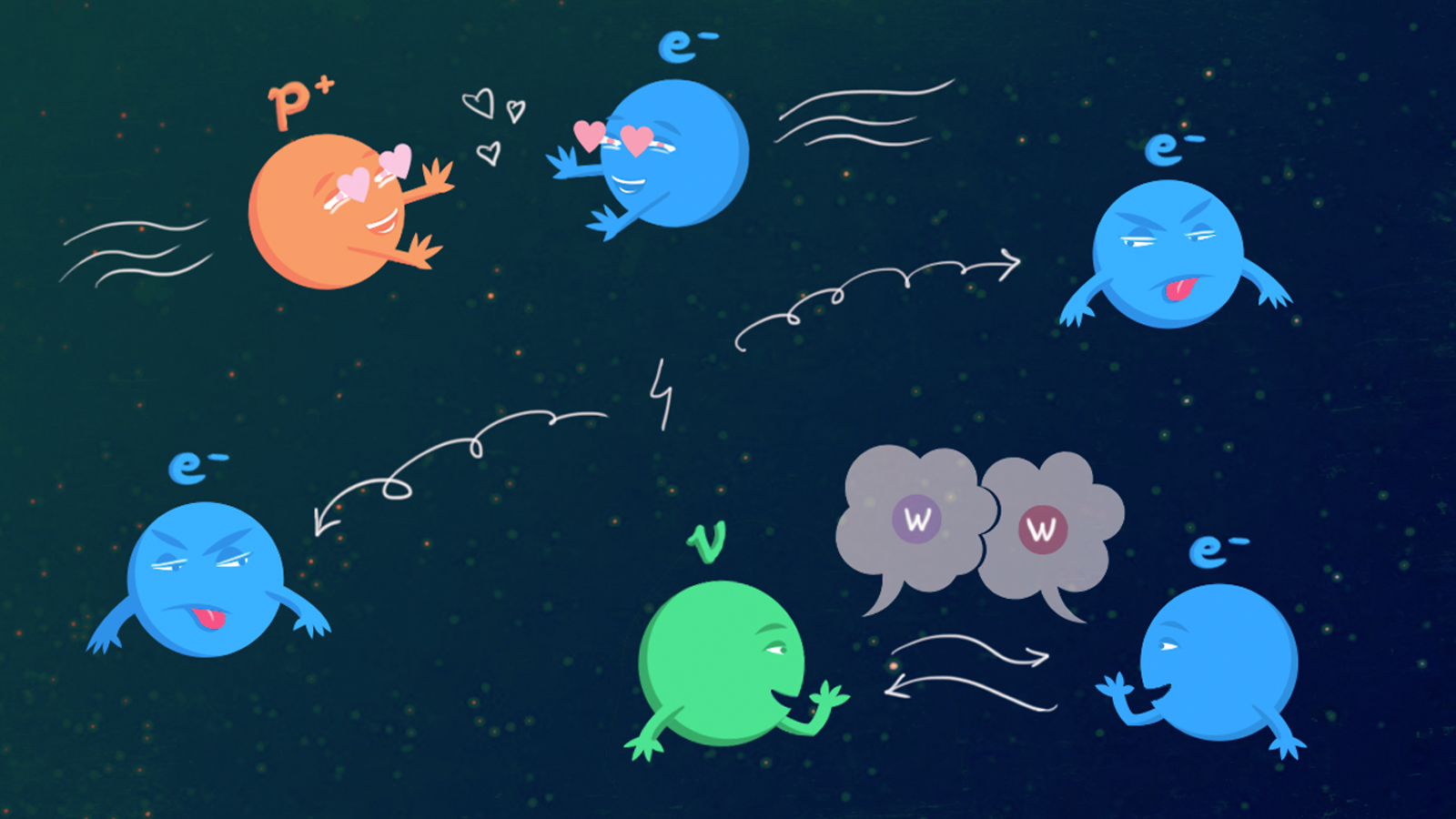Force carriers are particles that act like messages exchanged between other particles.
Scientists have discovered force carriers for three of the four known forces: electromagnetism, the strong force and the weak force. They are still searching for experimental evidence of the force carrier for the fourth force, gravity.
Particles communicate with one another in different languages, as defined by the kind of force carriers they exchange. Two particles can communicate with one another only if they are exchanging force carriers that convey a language they both understand. For example, a charged particle like an electron responds to force carriers for the electromagnetic force, but a neutral particle like a neutrino does not.
Sometimes two particles must be very close together to communicate via force carriers. They can “whisper” a message that would be too soft to extend over a long distance. Electrons and neutrinos can exchange W bosons, which are force carriers for the weak force, only when they are close to one another.
A force carrier can convey different messages. Protons and electrons, which have opposite charges, are attracted to one another through the electromagnetic force. The particles that carry that force, called photons, act like love notes. They draw the protons and electrons together.
When two electrons, which both have a negative charge, communicate through electromagnetism, the photons act more like hate mail. They push the electrons apart.













